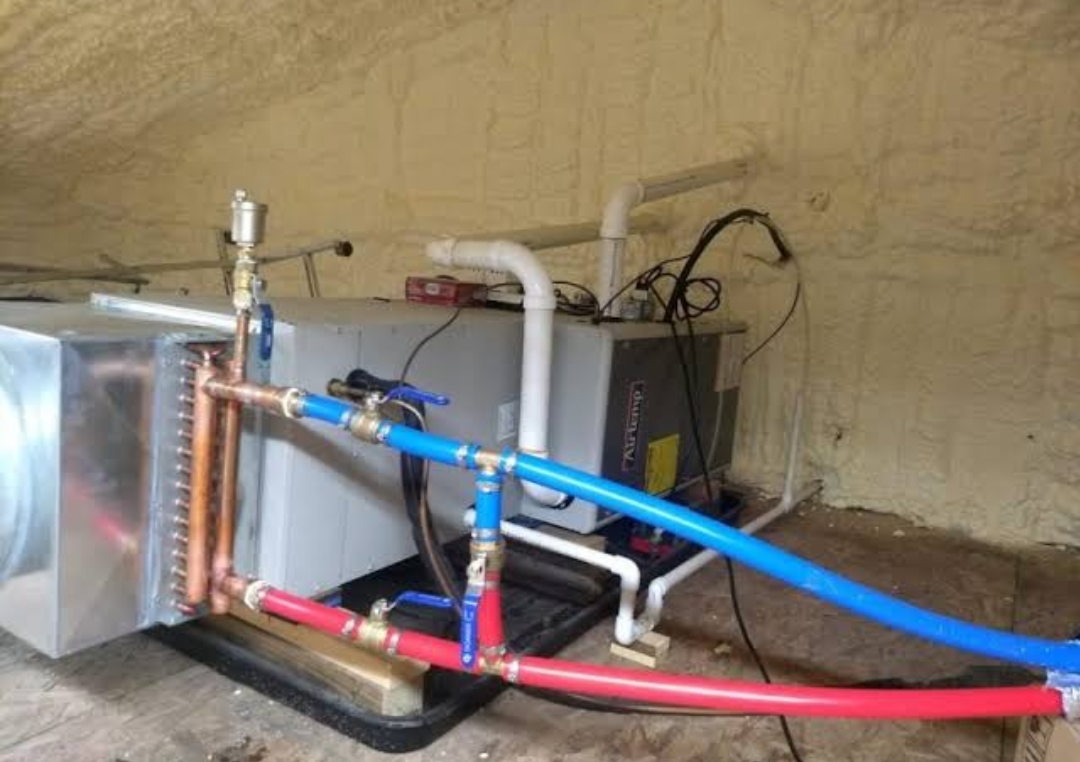10 Common Types of CNC Bits for Stainless Steel
Stainless steel is commonly used in several industries due to its durability, resistance to corrosion, and aesthetic appeal. However, its toughness can be challenging during machining, especially when using CNC machines. When cutting or drilling stainless steel, selecting the right CNC bits is essential for achieving precision, efficiency, and extended tool life.
This article will explore ten common types of CNC bits specifically designed for stainless steel. We will also explain the materials used in CNC bit for stainless steel and the key considerations for selecting the right bit.
What Are CNC Bits for Stainless Steel?
CNC bits for stainless steel are specialized cutting tools used in CNC machines to shape, cut, drill, or mill stainless steel. The material’s toughness requires CNC bits to withstand high temperatures, resist wear, and maintain precision throughout use.
CNC bits designed for stainless steel are usually made of carbide or cobalt, which provide superior hardness and heat resistance compared to standard bits. These bits also come with specific coatings, such as titanium nitride (TiN) or aluminum titanium nitride (AlTiN), further enhancing their durability and cutting performance.
10 Common Types of CNC Bits for Stainless Steel
Here are the top ten common types of CNC bits for stainless steel:
Carbide End Mills
Carbide end mills are famous for machining CNC stainless steel due to their hardness and ability to withstand high temperatures. They are used primarily for milling operations, such as slotting, profiling, and contouring.
Features
- Made from tungsten carbide for excellent heat resistance.
- Available in various flute designs for different cutting styles.
Pros
- Long tool life.
- High-speed cutting capabilities.
- Suitable for complex shapes and fine details.
Cons
- More expensive than HSS (High-Speed Steel) bits.
- Prone to chipping if not used correctly.
Cobalt Drill Bits
This type of bits are designed for drilling hard metals, including stainless steel. Adding cobalt makes these bits more challenging and heat-resistant than standard HSS bits.
Features
- Made from a blend of steel and 5-8% cobalt for enhanced strength.
- Heat resistance ensures that the bit doesn’t dull quickly.
Pros
- Ideal for high-heat drilling applications.
- Excellent for tough materials like stainless steel.
Cons
- More brittle than HSS bits, making them prone to breakage under excessive force.
- Higher cost due to cobalt content.
Indexable Milling Cutters
Indexable milling cutters use replaceable inserts, making them versatile and cost-effective for cutting stainless steel. They are ideal for high-precision milling operations.
Features
- Use replaceable carbide inserts that can be changed as they wear.
- Inserts come in various shapes and coatings for different applications.
Pros
- It is economical in the long run as only the inserts need replacing.
- Versatile with various insert options for different tasks.
Cons
- Higher initial cost.
- Requires careful setup and proper alignment for optimal performance.
Solid Carbide Drills
Solid carbide drills are precision tools known for rigidity and durability when drilling stainless steel. These drills excel at high-speed applications and can maintain accuracy even with harder materials.
Features
- Made entirely of carbide for exceptional hardness and wear resistance.
- Available in various coatings like TiN (Titanium Nitride) for improved tool life.
Pros
- Extremely hard and durable, reducing the need for frequent replacements.
- Capable of maintaining sharpness during high-speed drilling.
Cons
- They are very brittle, making them prone to breakage under improper use.
- Higher cost compared to standard drill bits.
Face Mills
Face mills are designed to create flat surfaces or finish cuts on stainless steel. They are commonly used in larger milling machines and have multiple replaceable inserts for effective cutting.
Features
- Broad cutting face with multiple cutting edges or inserts.
- It is ideal for producing smooth, flat surfaces over large areas.
Pros
- High material removal rates, making them efficient for large cuts.
- Replaceable inserts reduce overall tool costs.
Cons
- It can be expensive because their size and insert replacements.
- Requires a powerful machine for optimal performance.
Ball Nose End Mills
Ball-nose end mills are versatile tools for contouring, 3D shapes, and smooth surface finishes. Their rounded tip allows for the smooth machining of complex geometries, making them ideal for curved stainless steel parts.
Features
- Rounded cutting end designed for smooth, curved surfaces.
- Used primarily in 3D contouring and surface finishing.
Pros
- Excellent for intricate details and complex shapes.
- Provides a smooth surface finish.
Cons
- Slower material removal compared to flat-end mills.
- It is not ideal for rough cuts or heavy material removal.
Thread Mills
Thread mills are specialized tools for cutting internal and external threads in stainless steel. Unlike taps, which create threads in one pass, thread mills cut threads by moving around the hole, providing greater flexibility and control.
Features
- Made from high-speed steel or carbide for threading tough materials.
- Capable of cutting right- and left-hand threads in one tool.
Pros
- Versatile for a wide range of thread sizes.
- Reduced risk of tool breakage compared to taps.
- Can be used to repair damaged threads.
Cons
- Requires more programming and setup time.
- Slower process than using taps for threading.
Slot Drills
Slot drills, also known as two-flute end mills, are designed for cutting slots and pockets in stainless steel. They provide good chip evacuation and can plunge cuts.
Features
- Two cutting edges (flutes) for superior chip removal.
- It is ideal for plunge cutting, slotting, and pocketing operations.
Pros
- Excellent chip clearance, reducing overheating.
- Suitable for creating precise slots and holes.
Cons
- Less stable than end mills with more flutes.
- It could be better for finishing cuts or fine details.
Countersink Bits
This rype of bits are used to create a conical hole in stainless steel to allow the head of a bolt to sit flush with or below the surface. These bits are essential in finishing tasks for stainless steel assemblies.
Features
- Available in various angles, commonly 82° or 90°, for different fastener types.
- Made from durable materials such as carbide or high-speed steel for stainless steel.
Pros
- Ensures a clean, precise countersink for flush screw heads.
- Reduces material deformation around the hole.
Cons
- Limited to specific finishing applications.
- It can wear out fast if not properly lubricated during use.
Carbide-Tipped Router Bits
Carbide-tipped router bits are used for detailed cutting and shaping of stainless steel in CNC routers. These bits combine the toughness of carbide tips with the flexibility of steel bodies.
Features
- Carbide tips provide wear resistance, while the steel body offers flexibility.
- Available in various shapes, such as straight, flush trim, and dovetail.
Pros
- Excellent for fine detail work and custom shapes.
- Long tool life due to carbide cutting edges.
Cons
- Higher cost than standard steel router bits.
- Carbide tips can chip if mishandled or used at improper speeds.
Common Materials Used in CNC Bits for Stainless Steel
Below are some of the most common materials used in CNC bits for stainless steel.
Carbide
Carbide is one of the most commonly used materials in CNC bits because of its exceptional hardness and ability to withstand high temperatures. Tungsten carbide, in particular, is a go-to choice for cutting stainless steel. Carbide bits retain their sharp edges even in high-speed machining, making them suitable for applications where precision is critical and where stainless steel generates significant heat. While carbide tools last longer and maintain their sharpness under extreme conditions, they are also quite brittle and can chip if not handled properly or used at the wrong feed rates or speeds.
Cobalt (HSS-Co)
Cobalt drill bits and end mills, often called HSS-Co (High-Speed Steel with cobalt), are specifically designed to cut harder materials like stainless steel. Adding 5-8% cobalt to the steel improves the tool’s heat resistance and hardness retention, allowing it to operate efficiently at higher temperatures. Cobalt bits are known for their toughness and ability to handle heavy-duty operations, making them ideal for drilling through stainless steel without wearing out quickly. However, the added cobalt makes these bits more brittle than regular HSS bits and more expensive, but their longevity and durability in tough conditions make them a good investment.
High-Speed Steel (HSS)
High-Speed Steel (HSS) is a cost-effective material for CNC bits, particularly useful for less demanding stainless steel machining operations. While HSS does not offer the same hardness and heat resistance as carbide or cobalt, it is still tough enough to handle stainless steel at slower speeds or for applications where high precision is not as critical. HSS bits are more affordable and versatile but tend to wear out faster, especially in high-heat environments or when using tough materials like stainless steel. Nevertheless, they remain a common choice for applications requiring toughness and flexibility without the high costs associated with carbide or cobalt.
Ceramic
Ceramic CNC bits are often used in specialized high-speed machining operations involving extreme temperatures. These bits offer superior heat resistance compared to traditional materials, allowing them to work efficiently at high speeds without losing their cutting edge. Ceramic bits are ideal for precision machining and finishing tasks where wear resistance and heat management are paramount. However, they are pretty brittle and more expensive than carbide or HSS options. As a result, ceramic bits are less commonly used for general stainless steel machining but are valuable in specific high-speed applications.
Key Considerations for Choosing CNC Bits for Stainless Steel
There are some things to keep in mind before you can select the right CNC bits for machining stainless steel. Below are some of the factors:
Tool Material
CNC bits made from carbide, cobalt, or ceramic are generally better suited for CNC machining stainless steel, as they offer higher heat resistance and durability than standard high-speed steel (HSS) bits. Carbide bits, for instance, are ideal for high-speed operations, while cobalt bits are preferred for their toughness in heavy-duty applications.
Coating
Bits with advanced coatings, such as Titanium Nitride (TiN) or Titanium Aluminum Nitride (TiAlN), enhance heat resistance and tool life by reducing friction between the bit and the stainless steel surface. Coated bits are handy when working with stainless steel, as the material generates significant heat during machining, which can degrade the tool’s cutting edge over time. The suitable coating can help maintain sharpness and prevent overheating.
Geometry of the Bit
Bits with sharper cutting angles or specific flute designs are better suited for stainless steel, as they help improve chip evacuation and reduce heat buildup during cutting. For instance, a 4-flute design in end mills may be more effective in cutting stainless steel because it balances material removal with chip clearance, minimizing the chance of tool failure or overheating.
Cutting Speed and Feed Rates
Stainless steel requires slower cutting speeds and optimized feed rates to prevent excessive heat generation, which could dull or damage the bit. Selecting bits designed for lower RPM and optimal chip removal can greatly enhance machining efficiency and extend tool life.
Conclusion
Selecting the right CNC bits for machining stainless steel is essential in achieving precision and efficiency in your operations. There are several types of CNC bits, each with unique characteristics, pros, and cons. Understanding the various types of CNC bits and the materials used to manufacture them can help you make informed decision tailored to your specific machining needs. The key considerations can also help you select the right CNC bit for your project.




